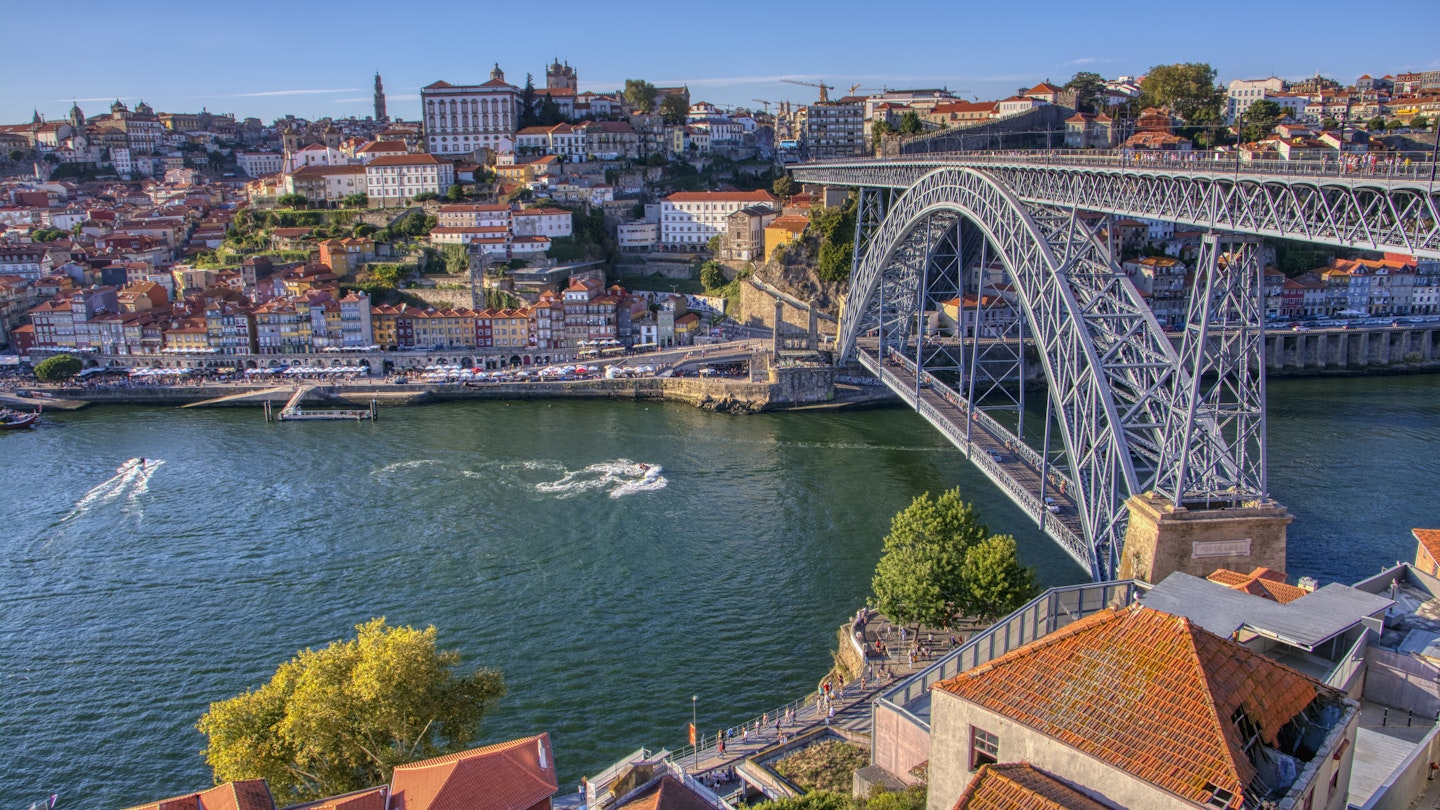Best Times to Visit Portugal: A Seasonal Guide
For a packed calendar of traditional celebrations, decadent food festivals, outdoor concerts, and many other events, head to Portugal. Summer is the time to catch the most diverse range of activities; however, there is always something happening here.
Festivals aside, it’s not easy to pin down the best month to visit Portugal – that varies based on your interests. Looking for outdoor activities in the south? Consider winter, when crowds are thinnest, prices are lowest, and the weather is pleasant yet not hot. Interested in beach days with ample time in the surf? Summer is ideal, as water temperatures are warmest during this season. For those who enjoy a mix of urban exploration and hiking adventures in the wilderness in the north, the shoulder seasons are the perfect time to visit when rainfall is manageable and tourist crowds are less dense.
No matter what type of experience you seek, you’ll find your ideal scenario in our comprehensive guide to what’s happening month-by-month throughout the year in Portugal.
The High Season: June to August – Ideal for Beach Lovers
Early summer marks one of the liveliest times to visit Portugal, as the festival calendar is full. Warm, sunny days are common, and while tourism picks up, the crowds are manageable, especially in the first half of June.
During the summer months, warmer ocean temperatures become prominent, particularly as you head south to the Algarve. Nevertheless, water temperatures and crowds peak in July and August; therefore, plan to share the stunning beaches with plenty of other sunseekers. Cities like Lisbon and Porto also experience higher visitor numbers, and prices tend to soar during these peak summer months. Outdoor dining at seaside terrace restaurants, open-air concerts, and street markets become highlights of the season. August is recognized as Portugal’s busiest tourist month, making advance reservations essential.
Expect higher prices in accommodations, typically increasing by 30% or more during the summer high season. On the plus side, summer is one of the most festive times to be in Portugal, with vibrant national celebrations and numerous local outdoor events.
Low-Season Months: November to March – A Budget-Friendly Option
If your aim is to escape the crowds and enjoy lower prices on accommodations, plan your visit during the low season. Many museums and other attractions operate on reduced hours, although you’ll still discover plenty of performances in cities and larger towns.
Winter brings changing weather conditions – expect rain in Porto and the north, while the south enjoys ample sunshine, making it a perfect opportunity for clifftop walks across the Algarve.
Visiting in November provides lovely seaside views along the coast, though a light jacket for cooler days and nights is advisable. In the north, temperatures can become notably cooler and wetter.
Long nights and cool days won’t dampen the Christmas spirit in December, as holiday markets brim with cheer surrounded by beautifully decorated squares. Expect pleasant days in the south, while the north can face cold, rainy conditions. The sea temperature drops, yet this month draws surfers attracted by the biggest waves.
January to March: Quiet and Cool
January is a tranquil month for a visit; however, the weather can be unpredictable and cool. The Christmas festivities wrap up on January 6 with Dia de Reis (Three Kings’ Day).
February tends to be one of the quietest months for international visitors, meaning accommodations are more readily available without needing to book months in advance. Expect rain, especially in the north, with cool coastal temperatures.
By March, rainy and chilly conditions dominate the interior and northern regions, while southern parts experience warmer and sunnier weather along with continuing low prices and fewer tourists.
April, May, September, and October: Outdoor Adventures Await
During the shoulder seasons, expect mild, often sunny days that are perfect for hiking, biking, and outdoor activities. This is an excellent time to explore Portugal’s natural wonders without the overwhelming crowds.
Spring brings warmer temperatures and abundant sunshine, alongside major religious holidays like Holy Week. April shows off beautiful wildflowers in the south, while festive Easter processions create a lively atmosphere, capped off by Liberation Day on April 25, featuring parades and fireworks in some towns.
May serves as a fantastic month to visit, especially if embarking on a long-distance trail like the Via Algarviana or the Rota Vicentina. While crowds in Lisbon, Porto, and the Algarve begin to rise, it remains relatively relaxed compared to the height of summer.
Fall is a magical time in Portugal, as changing leaves grace the northern landscape alongside grape harvests and associated festivals. Beaches remain inviting and often less crowded, even as ocean temperatures can feel a bit chilly. Warm weather lingers until mid-September, when the peak tourist season officially ends, and the easing of crowds leads to lower prices by the end of the month.
As temperatures begin to cool, visit the Douro Valley to witness grape harvesting and treading festivities. October also proves to be excellent for bird-watching, as various species migrate southward during the fall season.




